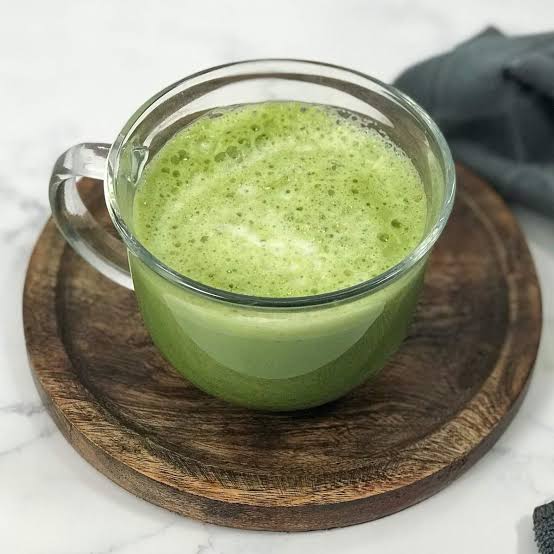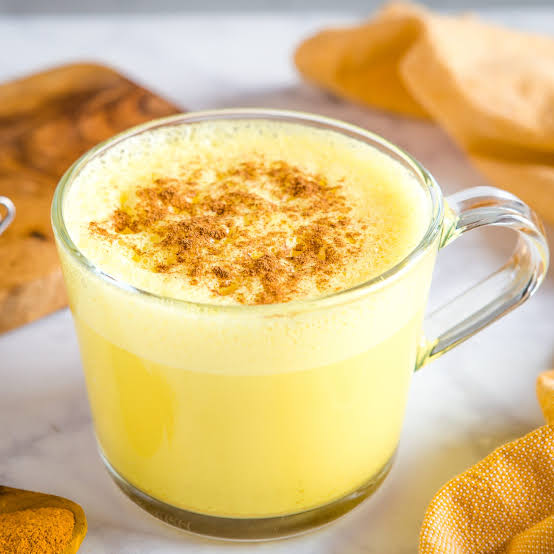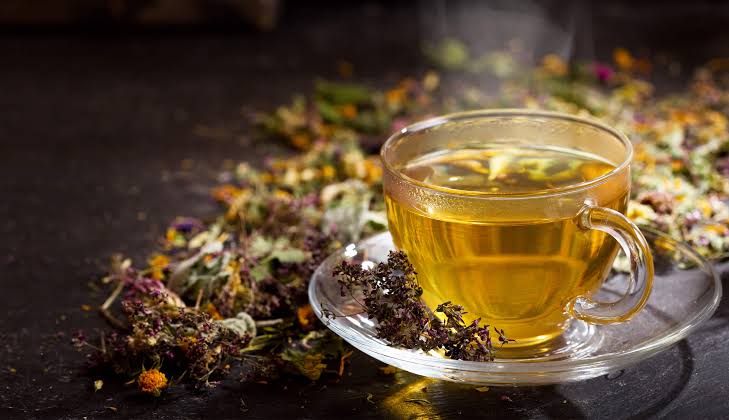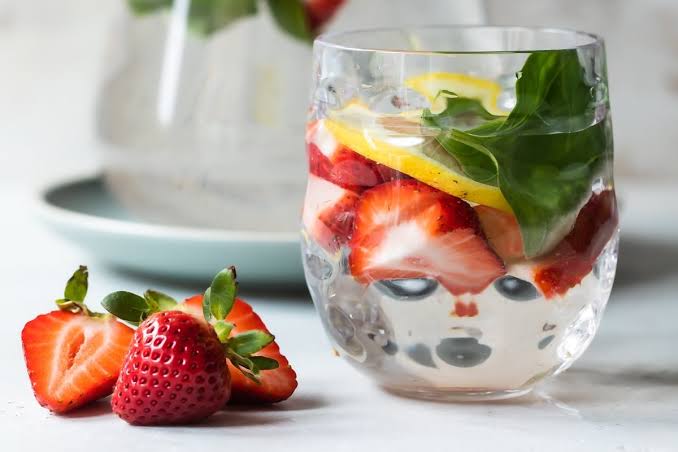Your Revolutionary Easy Coffee Alternative Adventure Starts Now!
What quick “easy coffee alternative” options are available for those days when you just want a change! Certainly, I could not for see a time when coffee was off the table as an option. If you’re not in agreeable, then certainly explore the amazing easy coffee alternative drinks listed below. Let me know what you think of them below in the comments.
Easy Coffee Alternative Drink Options.
Welcome to a world of delightful alternatives – a realm where coffee takes a step back, and a spectrum of innovative and invigorating beverages steps forward. In a society that thrives on the rhythm of caffeine, exploring Easy Coffee Alternative Drink Options opens up a universe of flavours, aromas, and experiences waiting to be embraced. Whether you’re seeking a break from the typical coffee routine, aiming to reduce caffeine intake, or simply desiring a fresh and unique way to enliven your senses, this journey into the realm of alternative drinks promises to awaken your taste buds and redefine your beverage repertoire.
From soothing herbal blends to frothy elixirs that combine ancient traditions with modern twists, these options offer both comfort and discovery. So, join us as we venture beyond the familiar cup and dive into the captivating world of Easy Coffee Alternative Drink Options – where every sip tells a story, and every flavour is a discovery waiting to unfold.

The Options Are Amazing!
A Matcha Latte is a popular and vibrant beverage made from matcha powder, a type of finely ground, powdered green tea. It’s a unique and visually striking drink that combines the rich, earthy flavours of matcha with the creamy texture of milk or a milk alternative.
Matcha itself has a long and storied history, originating in China during the Tang Dynasty and later brought to Japan by Buddhist monks in the 12th century. In Japan, matcha became an integral part of traditional tea ceremonies, known for its ceremonial preparation and consumption.
The production of matcha involves shading tea plants several weeks before harvesting, which enhances the chlorophyll content and gives the leaves their deep green colour. After harvesting, the leaves are steamed, dried, and carefully ground into a fine powder using traditional stone mills.
To make a Matcha Latte, a small amount of high-quality matcha powder is whisked with a small amount of hot water to create a smooth, vibrant green paste called “matcha tea” or “matcha concentrate.” Then, steamed milk or a milk alternative, such as almond milk or oat milk, is added to the matcha tea and gently mixed to create a creamy and visually appealing beverage. Some variations of Matcha Lattes might also include sweeteners like honey or flavoured syrups for added taste.
The result is a drink that beautifully balances the natural bitterness of the matcha with the richness and sweetness of the milk, resulting in a comforting and invigorating experience. Matcha Lattes have gained popularity worldwide for their distinctive flavour profile, vibrant green hue, and the potential health benefits associated with matcha, which is known for its antioxidants and potential energy-boosting properties.
Recipe.
- Ingredients: Matcha powder, hot water, milk (dairy or plant-based), sweetener (optional)
- Instructions:
- Sift 1 teaspoon of matcha powder into a bowl.
- Add a small amount of hot water (about 2 tablespoons) and whisk until the matcha is dissolved and no clumps remain.
- Heat milk in a separate saucepan or microwave until hot but not boiling.
- Pour the matcha mixture into a cup and add the heated milk.
- Sweeten with your preferred sweetener if desired and stir well. Enjoy!

A Chai Latte is a flavourful and aromatic beverage made from a combination of black tea, aromatic spices, milk or a milk alternative, and a sweetener. The term “chai” itself is Hindi for “tea,” and the drink originates from India, where it has been a staple for centuries.
Traditional chai is deeply ingrained in Indian culture and is often enjoyed as a social and comforting beverage. The recipe for chai can vary widely, with each household or region having its own unique blend of spices and preparation methods. However, the core ingredients typically include black tea, spices like cardamom, cinnamon, cloves, and ginger, milk, and sugar.
Here’s a general overview of the process of making a Chai Latte:
- Spices: A mixture of whole or ground spices (such as cardamom pods, cinnamon sticks, cloves, and ginger) is simmered in water to release their flavours and create a fragrant spice base.
- Tea: Black tea leaves are added to the spiced water and simmered to infuse the tea’s robust flavours into the mixture.
- Milk: Milk or a milk alternative (like almond milk, soy milk, or oat milk) is added to the spiced tea mixture, creating a creamy and comforting base.
- Sweetener: Depending on preference, a sweetener like sugar, honey, or maple syrup can be added to balance the flavours and enhance the drink’s overall taste.
- Strain and Serve: The chai mixture is strained to remove the tea leaves and spices, leaving behind a smooth and aromatic liquid. It is then served in a cup, often garnished with a sprinkle of ground spices on top.
Chai Lattes have gained immense popularity beyond India, and their recipes and preparation methods have evolved to suit different tastes and preferences. Many coffee shops and cafes around the world offer Chai Lattes as a cozy and flavourful alternative to traditional coffee and tea beverages. The combination of warming spices, bold tea flavours, and creamy milk makes Chai Lattes a beloved and inviting option for those seeking a rich and aromatic drink.
Recipe.
- Ingredients: Chai tea bag or loose-leaf chai tea, hot water, milk (dairy or plant-based), sweetener (optional)
- Instructions:
- Steep a chai tea bag or loose-leaf chai tea in hot water according to the package instructions.
- Heat milk in a separate saucepan or microwave until hot but not boiling.
- Remove the tea bag or strain the loose-leaf tea and pour the brewed chai into a cup.
- Add the heated milk to the cup and sweeten with your preferred sweetener if desired. Stir well and savor the flavours.

A Golden Milk, also known as a Turmeric Latte, is a warm and soothing beverage made from a combination of milk (or a milk alternative) and turmeric, along with other spices and sweeteners. It is characterized by its vibrant yellow colour, warming flavour, and potential health benefits.
The origin of Golden Milk can be traced back to traditional Indian Ayurvedic practices, where turmeric has been used for its medicinal properties for thousands of years. Turmeric, known for its active compound curcumin, is believed to have anti-inflammatory and antioxidant properties.
Here’s an overview of how Golden Milk is typically prepared:
- Turmeric Paste: A paste is made by cooking turmeric powder with water to enhance its flavor and make its beneficial compounds more bioavailable. This paste is often referred to as “golden paste.”
- Spice Blend: The golden paste is combined with a blend of warming spices such as black pepper, cinnamon, ginger, and sometimes cardamom. Black pepper is often included because it contains piperine, which can enhance the absorption of curcumin from turmeric.
- Milk and Sweetener: The spiced turmeric paste is then mixed with milk (dairy or plant-based) and heated. Sweeteners like honey, maple syrup, or agave nectar can be added to balance the flavors and create a delightful taste.
- Optional Additions: Some variations of Golden Milk may include additional ingredients such as coconut oil, vanilla extract, or nutmeg for extra flavour and richness.
The resulting drink is a creamy and soothing elixir with a golden hue and a balance of earthy, spicy, and sweet flavours. Golden Milk has gained popularity in recent years due to its potential health benefits and comforting qualities. Many people appreciate it as a caffeine-free alternative to coffee or tea, especially in the evenings, and its use has extended beyond traditional Ayurvedic practices to become a widely enjoyed beverage in various cultures around the world.
Recipe.
- Ingredients: Turmeric powder, milk (dairy or plant-based), sweetener (such as honey or maple syrup), ground cinnamon, ground ginger, ground black pepper (optional)
- Instructions:
- In a saucepan, heat milk over medium heat until hot but not boiling.
- Add 1/2 to 1 teaspoon of turmeric powder, a pinch of cinnamon, ginger, and black pepper (optional).
- Whisk the mixture well to combine all the ingredients.
- Sweeten with your preferred sweetener, adjust to taste, and stir until dissolved.
- Pour the golden milk into a cup, sprinkle some additional cinnamon on top, and enjoy the soothing flavours.

Herbal tea, often simply referred to as “herbal infusion” or “tisane,” is a beverage made by steeping various plant materials, such as herbs, flowers, fruits, and sometimes spices, in hot water. Unlike true teas, which are derived from the Camellia sinensis plant, herbal teas do not contain tea leaves and are caffeine-free.
The origins of herbal tea are diverse, spanning cultures and regions around the world. Indigenous peoples in different parts of the world have long been using local plant materials to create infusions for their flavours and potential health benefits. These practices have evolved over time, leading to a wide variety of herbal teas with distinct flavours, aromas, and qualities.
Here’s an overview of some popular types of herbal teas and their origins:
- Chamomile Tea: Chamomile flowers are steeped to create a soothing and calming infusion. Chamomile tea has been enjoyed for centuries and is known for its relaxing properties.
- Peppermint Tea: Peppermint leaves are used to create a refreshing and invigorating tea. It’s believed to aid digestion and provide a cooling sensation.
- Ginger Tea: Ginger root is often steeped to create a warming and spicy tea. It’s known for its potential digestive benefits and soothing qualities.
- Rooibos Tea: Rooibos, also known as red tea, comes from the leaves of the South African rooibos plant. It has a naturally sweet taste and is caffeine-free.
- Hibiscus Tea: Hibiscus flowers are used to make a vibrant red tea with a tart and fruity flavour. It’s commonly enjoyed both hot and cold.
- Lemon Balm Tea: Lemon balm leaves are steeped to create a tea with a mild citrus aroma. It’s often used for relaxation and to promote a sense of calm.
- Lavender Tea: Lavender flowers are infused to create a fragrant and soothing tea. Lavender tea is often enjoyed for its calming effects.
- Nettle Tea: Nettle leaves are steeped to create a tea that is rich in nutrients. It’s believed to have various potential health benefits.
As for its popularity as an alternative to coffee, herbal tea has gained substantial recognition and consumption around the world. Many people turn to herbal teas as a caffeine-free option to enjoy throughout the day, especially in the evening when they want to unwind without the stimulating effects of coffee. The wide array of flavours, potential health benefits, and comforting qualities of herbal teas have contributed to their popularity as a versatile and refreshing beverage choice.
Recipe.
Fruit-infused water, often referred to as “fruit water” or “flavoured water,” is a refreshing beverage made by infusing plain water with the flavours and aromas of various fruits, herbs, and sometimes spices. It offers a tasty and colourful alternative to plain water, making it more appealing and encouraging hydration.
The origins of fruit-infused water are not tied to a specific culture or region but have likely been practiced in different forms across various cultures where access to fruits and herbs was readily available. This concept has gained significant popularity in recent years due to its health benefits, delicious taste, and versatility.
Making fruit-infused water is quite simple, and there are endless combinations to explore. Here’s a basic guide on how to make it:
Ingredients:
- Fresh fruits (e.g., berries, citrus slices, melon chunks, pineapple)
- Fresh herbs (e.g., mint, basil, rosemary)
- Optional: spices (e.g., cinnamon sticks, ginger slices)
- Cold water or sparkling water
Instructions:
- Preparation: Wash and slice the fruits and herbs. If using larger fruits like citrus, you can cut them into thin slices or wedges. For berries, you can slightly crush them to release their juices and flavours.
- Combination: Place the prepared fruits, herbs, and any optional spices into a pitcher or a glass jar.
- Mashing (optional): If you want a more intense flavour infusion, you can gently muddle or mash the fruits and herbs using a muddler or the back of a spoon.
- Water: Fill the pitcher or jar with cold water or sparkling water. You can also use filtered water for a cleaner taste.
- Chill: Place the infused water in the refrigerator for at least a couple of hours, or preferably overnight. This allows the flavours to meld and the water to take on the fruity essence.
- Serve: Once the water is infused to your liking, you can serve it over ice and garnish with extra fresh fruits or herbs.
Fruit-infused water offers a delightful way to stay hydrated while enjoying the natural flavours of fruits and herbs. It’s a versatile drink that can be tailored to your taste preferences and seasonal produce availability. It’s important to note that the infused flavours will gradually diminish over time, so it’s best to consume the water within a day or two for optimal taste.
- Ingredients: Herbal tea bags or loose-leaf herbal tea, hot water, sweetener (optional)
- Instructions:
- Choose your preferred herbal tea flavour and steep the tea bag or loose-leaf tea in hot water according to the package instructions.
- Allow the tea to steep for the recommended time to extract the flavours fully.
- Remove the tea bag or strain the loose-leaf tea and pour the brewed herbal tea into a cup.
- Sweeten with your preferred sweetener if desired and stir well. Sip and relax!

Recipe.
- Ingredients: Fresh fruits (e.g., strawberries, citrus, berries), herbs (e.g., mint, basil), water
- Instructions:
- Slice the fruits into thin pieces or squeeze the citrus juice into a pitcher or glass.
- Add herbs of your choice for additional flavour.
- Fill the pitcher or glass with water and stir gently.
- Allow the fruit-infused water to sit for a few minutes to let the flavours infuse.
- Serve the refreshing drink over ice and enjoy the natural flavours.
These are just a few examples of coffee alternatives you can try. Feel free to experiment with different flavours and ingredients to create your own unique beverages. Enjoy exploring new tastes and the variety they bring to your daily routine!
Author.
Brendon McAliece is a multi-lingual expat who brings over three decades of flight simulator/PC building experience as well as over two decades of real-world jet fighter experience as a weapons/egress technician. He holds a sport pilot certificate giving him real-world flying experience. Hi travels have taken him from Europe to the Middle East, Asia and his home of Australia. He has a passion for travel, languages, Flight simulation as well as Guitaring and Coffee. You can read more in his blogs below.

Learn more @
DreamingGuitar.com – DreamingCoffee.com – LetsFlyVFR.com
Home – Blog – Shop – About
As an amazon.com affiliate I may earn on qualifying sales.








